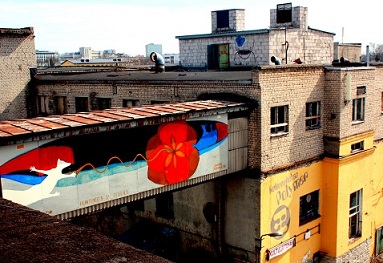WHAT DOES THE FUTURE HOLD FOR €ŒARTS FACTORIES€ IN FRANCE?
A new series of cultural and arts venues
The re-appropriation of derelict industrial premises – often located on the periphery of city centres – by groups of artists and leaders of arts projects is a relatively recent phenomenon, but it now dates from more than thirty years ago.


It first started in Northern Europe in the 1970s and, in France, it mainly started in the middle of the 1980s. Beyond the singularity of the history of each of these adventures and the local contexts where they started and developed, there are many similarities and concordances between them. These concern their fundamental orientations as well as their forms of operation, their development through the years and their present perspectives.
Particularly on the basis of cases in France in the 1990s, therefore, this studyi aims to present the features that are largely common to these conversions of disused former industrial spaces [“friches industrielles†in French] into “arts factories†[“friches culturelles†], that is, real spaces for artistic and cultural projects. It points out the ideological positions from which social players led these project spaces. It indicates how they position themselves among the plurality of cultural and arts centres or institutions that are now present in geographical areas. The French context particularly illustrates all this multiplicity of initiatives and systems, which have been initiated and partly institutionalised in artistic and cultural fields since the 1980s.
The comparative long-term study of concrete cases identifies a general theory. It results in considering arts factories as related to a dynamic of accompaniment of internal upheavals within the worlds of art at the end of the last century (Becker, 1982) and in which, in response, the arts factories play an active part in their own way. This dialectic implication also echoes the transformations of the relationships between the worlds of art with society in general and the different social worlds that make it up. The net movement of professionalization and organisation in constituted sectors of the worlds of the arts thus coincides with very large-scale societal and socio-economic changes and developments. Through the globalisation of a new mode of development (Boltanski & Chiapello, 1999), we are witnessing the rise of a new interaction, an entirely new hybridization between cultural and artistic development on the one hand and between economic and organisational development on the other. Whether one speaks of cognitive capitalism (Moulier Boutang, 2007) or aesthetic capitalism (Assouly, 2008), we are faced with a complete redefinition of the place, role and function of culture in our societies – and, at its core, fine art – as a provider of sensitive works and aesthetic experiences. As a result, the hierarchies of the value and position of artistic fields (Bourdieu, 1992) inherited from the 20th century are at least profoundly questioned. Read More
Philippe Henry
Lecturer & Thesis Advisor, Theatre Department
Université Paris 8 – Saint-Denis / France




